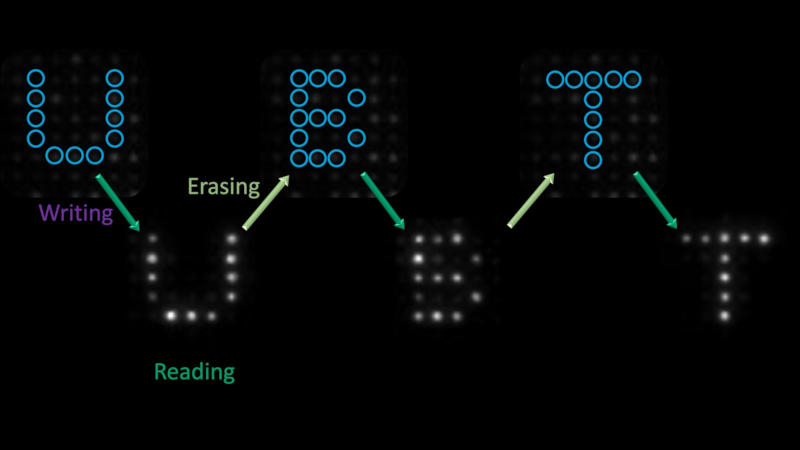Scientists have successfully tested logic gates on photons – this brings the appearance of optical processors closer


Scientists at the University of Bayreuth (Germany) and the University of Melbourne (Australia) have developed a switchable optical unit for storing and reading binary information using light. The project promises to be a big step towards building a fully optical computer, which uses photons for data processing and storage, rather than electrons, as in current chips.


Image source: phys.org
The scientists used these logic gates to process information solely using light—they performed multiple read, write, and erase cycles on polymer spheres to record the alphabet on the same section of an array of microstructures. Scientists have been working on creating an all-optical logic gate for more than a decade, and this project is an example of the practical application of this technology. It will help move data processing and storage from electrons to photons and reduce the power consumption of systems.
Photonic computing also offers other benefits: You can work not only with signal strength (the number of photons), but also with wavelength (color) and polarization (direction of vibration) – resulting in a wide range of signals. One optical valve will be able to process several signals at once, which in the future will allow doubling, tripling or even quadrupling the computing power of a single optical processor.
Photons move faster and more efficiently than electrons. Therefore, fiber optic cables are used to transmit data over long distances. Their use in logic gates could be an important practical step in the use of photons in data processing.
Recent Posts
A demo of Dispatch, a comedy game about a superhero agency from the former developers of Tales from the Borderlands and The Wolf Among Us, has been released on Steam
Developers from the American AdHoc Studio, founded by former Telltale Games, Ubisoft and Night School…
Digma DP-FHD800A LCD Full HD Projector Review: A Modern Approach
When you think about a home theater, you immediately imagine bulky projectors with a bunch…
Lian Li Introduces HydroShift II LCD-C Liquid Cooling System with 360mm Radiator and Three Configurations
Lian Li has introduced a series of maintenance-free liquid cooling systems HydroShift II LCD-C. It…
Apple: App Store App Developers to Earn $406 Billion in 2024
Amid mounting pressure from U.S. regulators, Apple has released the results of an independent study…
ASRock Admits Its Motherboards Break Ryzen 9000 Processors
Following a report from YouTube channel Tech Yes City that ASRock linked Ryzen 9000 processor…
Apple to Change OS Numbering: iOS 26 to Come This Year Instead of iOS 19
Apple is preparing a large-scale rebranding of its line of operating systems. This was reported…